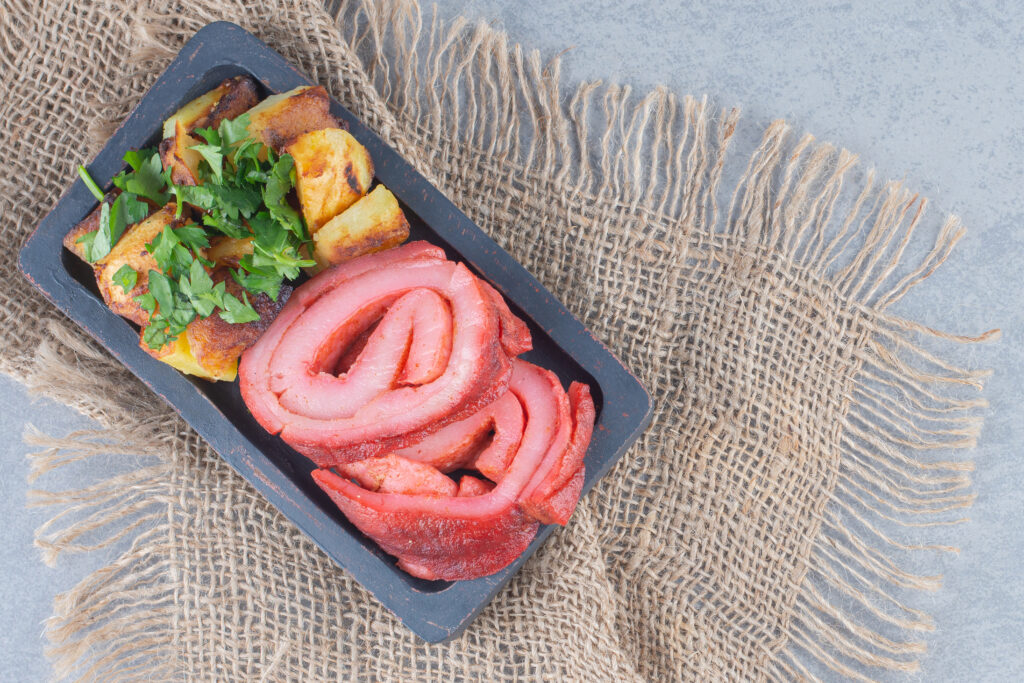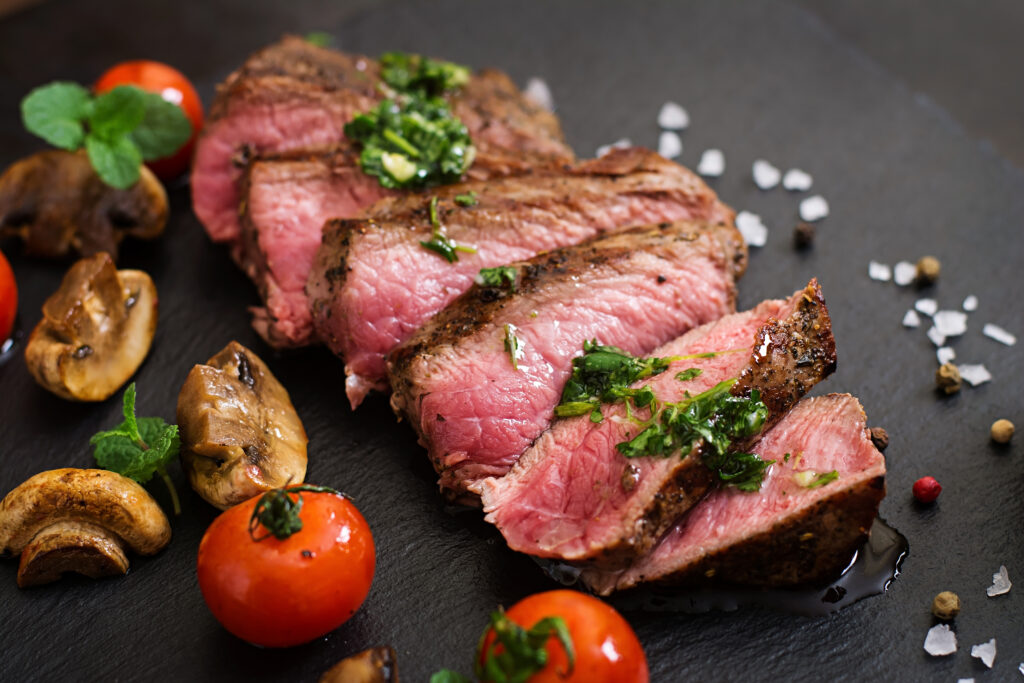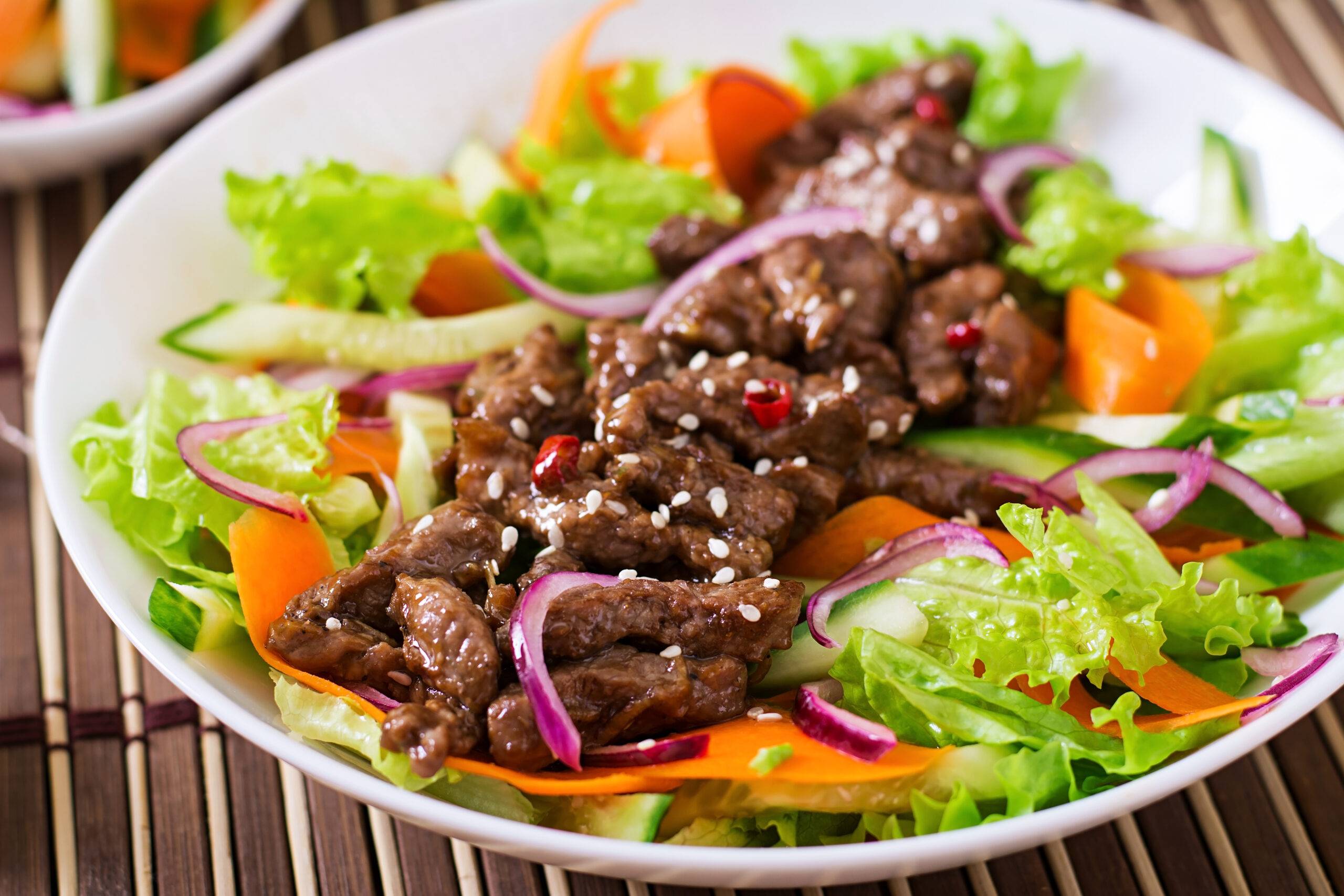The Healthiest Lunch Meats: Your Guide to Nutritious Choices
When it comes to maintaining a healthy diet, the choices we make for lunch can significantly impact our overall well-being. Lunch meats, often a staple in sandwiches, salads, and wraps, can vary widely in nutritional value. In this guide, we will explore the healthiest options available, along with delicious recipes to inspire your next meal. With an understanding of what to look for and a breakdown of the best lunch meats, you’ll be well-equipped to craft delicious and health-conscious lunches.
Table of Contents
Understanding Lunch Meats
Lunch meats, also known as deli meats or cold cuts, are precooked or cured meats that are sliced and served cold. They include a variety of meats such as turkey, chicken, ham, roast beef, salami, and even vegetarian options. While they are convenient and tasty, many lunch meats are also high in sodium, preservatives, and unhealthy fats. Therefore, it’s crucial to choose wisely.
The appeal of lunch meats lies in their versatility. They can be used in various ways, from sandwiches and wraps to salads and charcuterie boards. However, consumers must navigate the maze of options, especially when it comes to health. Many processed lunch meats can contain high levels of sodium and additives, which can undermine their health benefits.
What to Look for in Healthy Lunch Meats
When selecting lunch meats, consider the following factors to ensure you’re making the healthiest choices:
1. Lean Proteins
Opt for meats that are high in protein but low in fat. Lean meats provide essential amino acids needed for muscle repair and growth while keeping calorie counts low. Proteins are the building blocks of life, crucial for maintaining muscle mass, repairing tissues, and supporting metabolic processes. Choosing lean options helps to maintain your caloric intake without sacrificing necessary nutrients.
2. Low Sodium Content
Many processed meats contain excessive sodium, which can contribute to high blood pressure and heart disease. The American Heart Association recommends keeping sodium intake to less than 2,300 milligrams per day, ideally aiming for around 1,500 milligrams. Look for low-sodium options whenever possible to reduce your overall intake and maintain heart health.
3. Minimal Additives and Preservatives
Preservatives like nitrates and nitrites are commonly found in lunch meats and have been linked to health issues, including certain cancers. These additives are used to enhance flavor, maintain color, and prolong shelf life. Choosing brands that avoid these additives can make a significant difference in your overall health. Always check the ingredient list and opt for products that use natural preservatives or none at all.
4. Organic and Grass-Fed Options
If possible, select organic or grass-fed meats. These options are often more humanely sourced and may contain higher levels of beneficial nutrients like omega-3 fatty acids. Organic meats are produced without the use of antibiotics or growth hormones, making them a more sustainable choice for both health and the environment.
5. High-Quality Ingredients
Quality matters when it comes to lunch meats. Look for meats made from whole cuts rather than those that are processed or formed from scraps. Whole cuts often retain more of their natural flavor and texture and typically have fewer additives.
6. Portion Control
While choosing healthy lunch meats is important, portion sizes also matter. Even the healthiest options can contribute to excess calorie intake if consumed in large quantities. Aim for about 2-3 ounces of lunch meat per serving, and balance it with other nutritious ingredients.
The Healthiest Lunch Meats to Choose
Now that we understand what to look for, let’s delve into some of the healthiest lunch meat options available:

1. Turkey Breast
Turkey breast is a lean protein powerhouse, offering around 24 grams of protein per 3-ounce serving and only about 1 gram of fat. It’s also low in calories, making it an excellent choice for those watching their weight. Beyond its nutritional profile, turkey is also rich in essential nutrients like B vitamins, selenium, and phosphorus, which contribute to overall health.
When purchasing turkey breast, look for brands that use minimal additives and are low in sodium. Avoid options with added sugars or fillers. Oven-roasted or smoked turkey breast can add variety to your meals while keeping them healthy.
Recipe: Turkey Avocado Wrap
Ingredients:
- 2 ounces sliced turkey breast (low sodium)
- 1 whole-grain tortilla
- 1/2 avocado, sliced
- 1 cup of mixed greens (such as spinach, arugula, or lettuce)
- 1/4 cup diced tomatoes
- 1 tablespoon hummus or Greek yogurt
Instructions:
- Spread hummus or Greek yogurt on the tortilla.
- Layer turkey, avocado slices, mixed greens, and tomatoes on top.
- Roll the tortilla tightly, slice in half, and enjoy!

2. Chicken Breast
Similar to turkey, chicken breast is another lean option, providing high protein with very little fat. A 3-ounce serving of skinless chicken breast contains about 26 grams of protein and 3 grams of fat. Rotisserie or sliced grilled chicken is convenient and can be used in various dishes.
Ensure to choose options that are minimally processed to avoid excess sodium and preservatives. You can enjoy chicken breast in sandwiches, salads, or as a protein topping for grain bowls. It’s versatile enough to suit many flavors and cuisines.
Recipe: Grilled Chicken Salad
Ingredients:
- 4 ounces grilled chicken breast, sliced
- 2 cups mixed greens
- 1/2 cucumber, sliced
- 1/4 cup cherry tomatoes, halved
- 1/4 red onion, thinly sliced
- 1 tablespoon balsamic vinaigrette
Instructions:
- In a large bowl, combine mixed greens, cucumber, cherry tomatoes, and red onion.
- Add sliced grilled chicken on top and drizzle with balsamic vinaigrette.
- Toss gently to combine and serve.

3. Ham (Lean Cuts)
Ham can be a delicious addition to your lunch but be mindful of the cuts you choose. Look for lean cuts of ham, which contain fewer calories and fat. A 3-ounce serving of lean ham typically has around 16 grams of protein and 4-6 grams of fat.
Opt for brands labeled as “low sodium” to minimize salt intake. Additionally, ham can be paired with a variety of ingredients, from whole-grain bread to roasted vegetables, making it a tasty option for diverse lunch ideas.
Recipe: Ham and Spinach Quiche
Ingredients:
- 1 pre-made whole-grain pie crust
- 3 eggs
- 1 cup milk (or a non-dairy alternative)
- 1 cup diced lean ham
- 1 cup fresh spinach, chopped
- 1/2 cup shredded cheese (cheddar or Swiss)
- Salt and pepper to taste
Instructions:
- Preheat your oven to 375°F (190°C).
- In a bowl, whisk together eggs and milk. Season with salt and pepper.
- Spread diced ham and chopped spinach in the pie crust, then pour the egg mixture over the top.
- Sprinkle cheese on top and bake for 30-35 minutes, or until the egg is set and the top is golden.
- Let cool slightly, slice, and serve.

4. Roast Beef
Roast beef can be a flavorful addition to sandwiches, offering around 22 grams of protein per serving and a good amount of iron, which supports healthy blood production. A 3-ounce serving of roast beef generally contains about 10 grams of fat, so opt for lean cuts when making your choice.
Choose options that are lower in sodium and made from lean cuts. Look for products labeled as “top round” or “eye round” for the best health benefits. Roast beef is especially delicious with horseradish or mustard on whole-grain bread.
Recipe: Roast Beef Sandwich with Horseradish Sauce
Ingredients:
- 3 ounces sliced roast beef (low sodium)
- 2 slices whole-grain bread
- 1 tablespoon horseradish sauce
- 1 cup arugula or mixed greens
- 1/4 cup sliced tomatoes
- Salt and pepper to taste
Instructions:
- Spread horseradish sauce on one slice of bread.
- Layer roast beef, arugula, and tomatoes on top.
- Season with salt and pepper, then top with the second slice of bread.
- Slice in half and enjoy!
5. Bologna (Turkey or Chicken)
While traditional bologna is often high in fat and sodium, turkey or chicken bologna can be a healthier alternative. Turkey bologna typically contains about 4 grams of fat and 10 grams of protein per 2-ounce serving, making it a more balanced option.
Look for brands that focus on natural ingredients, avoiding those with excessive preservatives or artificial colors. Turkey or chicken bologna can add a familiar flavor to sandwiches without the guilt associated with traditional versions.
Recipe: Turkey Bologna and Cheese Roll-Ups
Ingredients:
- 4 slices turkey bologna (low sodium)
- 4 slices low-fat cheese (Swiss or cheddar)
- 1/2 cup sliced bell peppers
- 1 tablespoon mustard or hummus (optional)
Instructions:
- Lay out the turkey bologna slices and place a slice of cheese on each.
- Add a few slices of bell pepper on top of the cheese.
- Roll up each slice tightly and secure with a toothpick if desired.
- Serve with mustard or hummus for dipping.
6. Salami (Turkey or Low-Fat Varieties)
Salami is typically higher in fat and sodium, but there are healthier versions made from turkey or low-fat meats. These options can be enjoyed in moderation, offering bold flavors without overwhelming your dietary goals. A slice of turkey salami typically contains around 50 calories and 3 grams of fat.
When selecting salami, look for options that use natural seasonings and are free of nitrates. You can use salami in wraps or as part of a charcuterie board, balanced with fresh fruits and vegetables.
Recipe: Turkey Salami and Cheese Mini Pizzas
Ingredients:
- 4 whole-grain English muffin halves
- 1/2 cup marinara sauce
- 8 slices turkey salami
- 1 cup shredded mozzarella cheese
- Fresh basil for garnish
Instructions:
- Preheat your oven to 400°F (200°C).
- Place English muffin halves on a baking sheet and spread marinara sauce on each half.
- Top with turkey salami slices and mozzarella cheese.
- Bake for 10 to 12 minutes, or until the cheese is melted and bubbling.
- Garnish with fresh basil and serve warm.
7. Plant-Based Alternatives
For those looking to reduce meat consumption, plant-based lunch meat alternatives made from soy, pea protein, or other legumes can be nutritious and flavorful. Many brands are now creating deli slices that are high in protein and fiber while being low in saturated fat.
These options are suitable for vegans, vegetarians, or anyone looking to incorporate more plant-based foods into their diet. Examine the labels to confirm that these alternatives contain minimal sodium and additives, and enjoy them in sandwiches, salads, or grain bowls.
Recipe: Plant-Based Meatball Sub
Ingredients:
- 4 plant-based meatballs (store-bought or homemade)
- 1 whole-grain sub roll
- 1/2 cup marinara sauce
- 1/4 cup shredded mozzarella cheese
- Fresh basil for garnish
Instructions:
- Cook plant-based meatballs according to package instructions.
- Preheat the oven to 350°F (175°C).
- Place meatballs in the sub roll and drizzle with marinara sauce.
- Top with mozzarella cheese and bake for 10 minutes or until the cheese is melted.
- Garnish with fresh basil and serve hot.
Tips for Incorporating Healthy Lunch Meats into Your Diet
1. Read Labels
Always read the nutrition labels when purchasing lunch meats. Pay close attention to serving sizes, sodium content, and ingredient lists to ensure you’re making the healthiest choice. Be wary of any added sugars, fillers, or preservatives.
2. Pair with Whole Grains and Veggies
Balance your lunch by pairing healthy meats with whole-grain bread and plenty of vegetables. Adding leafy greens, tomatoes, cucumbers, and avocados can enhance the nutritional value of your meal. Whole grains provide fiber, while vegetables offer essential vitamins and minerals.
3. Limit Processed Meats
While lunch meats can be convenient, they should not be the mainstay of your diet. Try to limit processed meats and incorporate whole, unprocessed foods like grilled chicken, fish, or legumes in your meals. Emphasizing whole foods ensures you’re getting the most nutrients without the downsides of processed options.
4. Make Your Own Lunch Meat
If you have the time, consider making your own lunch meats. Slow-cooked or roasted meats can be seasoned to your liking and sliced for sandwiches, ensuring you control the ingredients. You can experiment with different herbs and spices for a personalized touch.
5. Create Balanced Meals
When crafting your lunch, aim for a balance of macronutrients—proteins, carbohydrates, and healthy fats. Incorporating a variety of food groups not only enhances flavor but also provides a wider range of nutrients essential for overall health.
6. Experiment with Different Cuisines
Using lunch meats in various cuisines can keep meals exciting. Try using turkey or chicken in a Mediterranean wrap with hummus and veggies, or create a classic Italian sandwich with low-sodium salami and fresh basil. Experimenting with different flavors can make healthy eating enjoyable.
Conclusion
Choosing the healthiest lunch meats can be a game-changer for your overall diet. By opting for lean proteins, low-sodium options, and products with minimal additives, you can enjoy delicious sandwiches and salads without compromising your health. With these guidelines in mind, along with the provided recipes, you can create satisfying and nutritious lunches that contribute to your overall well-being. Enjoy your healthy eating journey!

